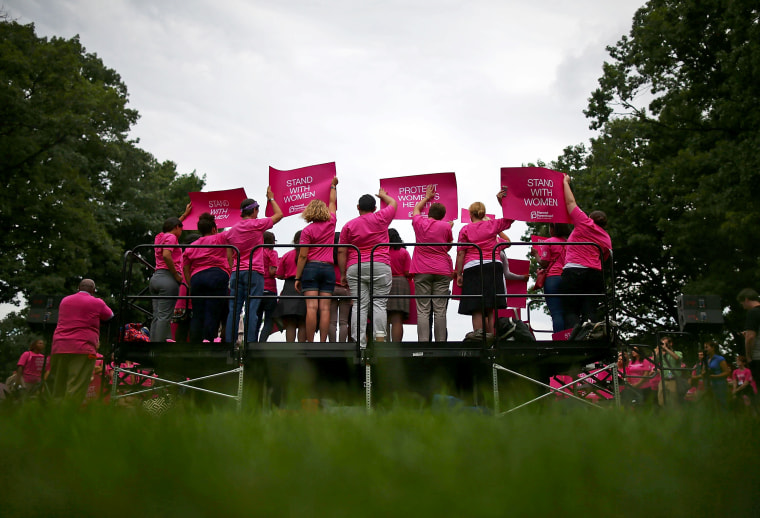For opponents of reproductive rights, the Kermit Gosnell case offered a new opportunity to do what they want to do anyway: impose new restrictions. It's been common in recent months to hear conservative policymakers at the state and federal level cite the notorious Philadelphia clinic to justify everything from closing medical facilities to imposing strict new regulations on medical professionals.
But as my MSNBC colleague Irin Carmon reported yesterday, there's a better and more effective way to prevent similar cases. Look no further than California Gov. Jerry Brown (D), who signed the "Early Access to Abortion Bill" into state law yesterday.
The Early Access to Abortion Bill will enable trained nurse practitioners, certified nurse midwives, and physician assistants to perform first-trimester abortions by vacuum aspiration. It's the logic of cause and effect: If you make it easier to access an abortion, earlier, and from a legitimate provider, there will be fewer desperate customers turning to unsafe providers.Nearly one third of women will have an abortion before the age of 45, but the number of providers is at best stagnant and in many places diminishing. In California, the country's most populous state, almost half of women live in a county without an abortion provider. Nationally, the number of counties without an abortion provider is 87%–where a third of American women live.
Irin went on to note that many of the women who went to Gosnell had run out of options -- they had limited financial resources and were too far along in their pregnancies to rely on alternate providers under Pennsylvania's laws.
Since "earlier abortions are cheaper and have lower risks of complications," California's new law should serve as a model for other states. It won't be, of course -- anti-abortion lobbyists tried and failed to derail the Early Access to Abortion Bill -- but it should.
As Ed Kilgore added, "It's all kind of self-evidentially logical unless you are just shedding crocodile tears over late-term abortions and the women who have them, and are really just using cases like Gosnell's to create a pretext for further restricting the availability of all abortion services. So Brown and the California legislature not only passed good legislation that makes the right to choose more of a reality for many citizens of the state; they've also directed a large spotlight onto antichoice dishonesty about "health and safety" and late-term abortions."
